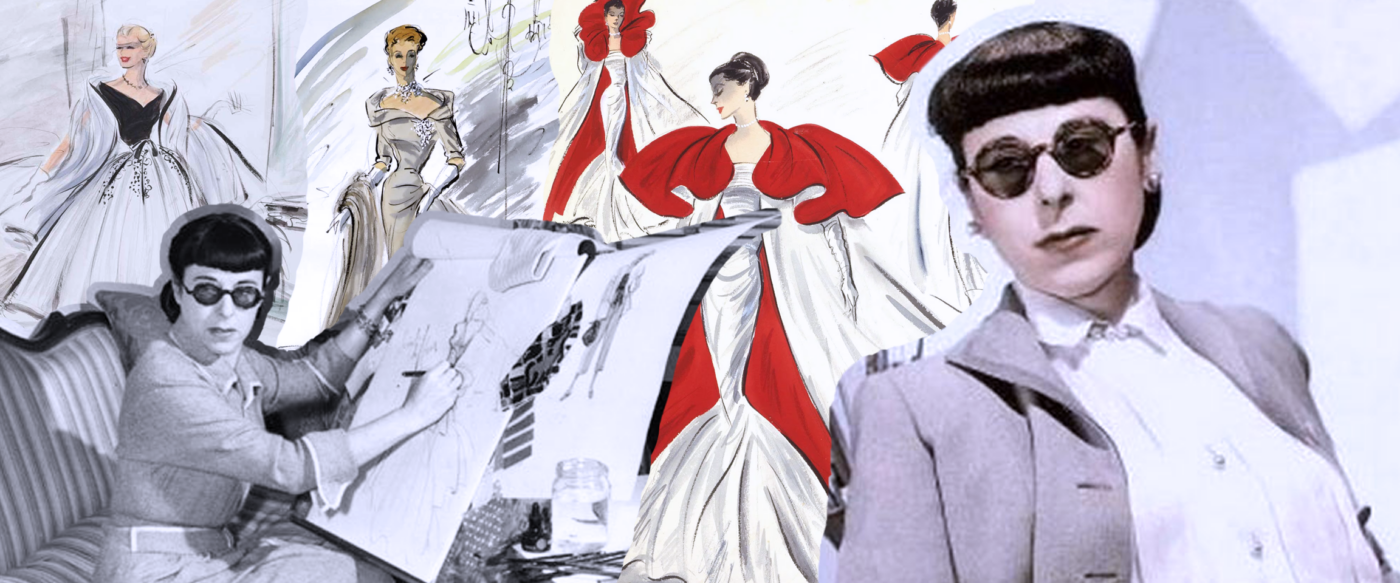When it comes to legendary costume designers who shaped Hollywood’s golden age, few names shine as brightly as Edith Head. With her signature blunt bangs, oversized glasses, and impeccable sense of style, Head not only defined on-screen fashion but also influenced everyday trends in the 1940s. Her rise to fame was a testament to talent, perseverance, and an innate understanding of how clothing could transform a character—and a star.
A Star in the Making
Born in 1897, Edith Head’s journey into the world of costume design was anything but conventional. She earned a degree in Romance Languages and initially worked as a teacher before realizing her true passion lay in fashion. With little formal training in design, she boldly applied for a sketch artist position at Paramount Pictures in 1924, impressing her employers with borrowed sketches. What she lacked in experience, she made up for with an unparalleled work ethic and a keen eye for detail.
Throughout the 1930s, Head honed her skills under the tutelage of veteran designers, and by the 1940s, she had become one of the most sought-after costume designers in Hollywood. Her ability to cater to both the aesthetic needs of a film and the personal preferences of actresses made her a favorite among the biggest stars of the era.
The Edith Head Aesthetic
Head’s designs epitomized the elegance and sophistication of 1940s fashion. With wartime restrictions limiting fabric use, she mastered the art of creating striking silhouettes with minimal materials. Her designs often featured structured shoulders, nipped-in waists, and dramatic draping—hallmarks of the era’s power dressing.
Her collaborations with leading actresses such as Barbara Stanwyck, Veronica Lake, and Ingrid Bergman helped cement her reputation. One of her most iconic creations was the sultry, peek-a-boo hairstyle and flowing satin gown worn by Veronica Lake in This Gun for Hire (1942). Her ability to merge practicality with allure made her designs both aspirational and accessible to everyday women.
Redefining Fashion in the 1940s
Beyond her work in Hollywood, Head’s influence extended to mainstream fashion. The war years saw women entering the workforce in unprecedented numbers, and her structured yet feminine designs offered a balance between professionalism and style. She played a key role in popularizing the “utility fashion” movement, proving that practicality didn’t mean sacrificing glamour.
She also helped bridge the gap between costume design and retail fashion, as many of her film creations were quickly replicated for department stores. Women across America wanted to emulate the poised and polished looks of their favorite movie stars, and Edith Head ensured they could do just that.
A Lasting Legacy
By the end of the 1940s, Edith Head had firmly established herself as Hollywood’s most influential costume designer. She would go on to win a record-breaking eight Academy Awards and dress some of the biggest names in cinema history. But her impact on fashion was more than just on the silver screen—she shaped an era where women embraced style as a form of empowerment.
Today, her legacy lives on in the timeless elegance she championed, proving that true style is forever. Whether on the runway, in the workplace, or in everyday fashion, the influence of Edith Head’s vision can still be felt, reminding us that fashion is not just about clothing—it’s about storytelling.

